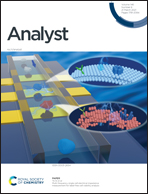A new method for measuring pen pressure in forensic handwriting analysis – a proof of concept study
Abstract
This work describes a new method for the analysis of handwritten documents through a system composed of a pre-selector optical analyser equipped with light sources of different wavelengths coupled with bandpass filters combined with an optical coherence tomography (OCT) instrument. The optical analyser identifies regions with different pen pressures on the paper using specific wavelengths from ultraviolet (UV) to infrared (IR) and bandpass filters. Then the selected regions are analysed with a coherence tomography analyser to measure the depth of grooves and capture three-dimensional images. With this methodology, it is possible to identify similarities, or differences, between the pieces of evidence under investigation, increasing the possibility of correct attribution concerning the authorship of the signature and we also showed that this feature is independent of the paper substrate. In this work, a new strategy will be presented to categorize and quantify pen pressure in order to aid a better response for a forensic examiner. Thereby, from the observed areas that display higher pressures (more significant grooves), it is possible to determine the authorship of the signature.



 Please wait while we load your content...
Please wait while we load your content...